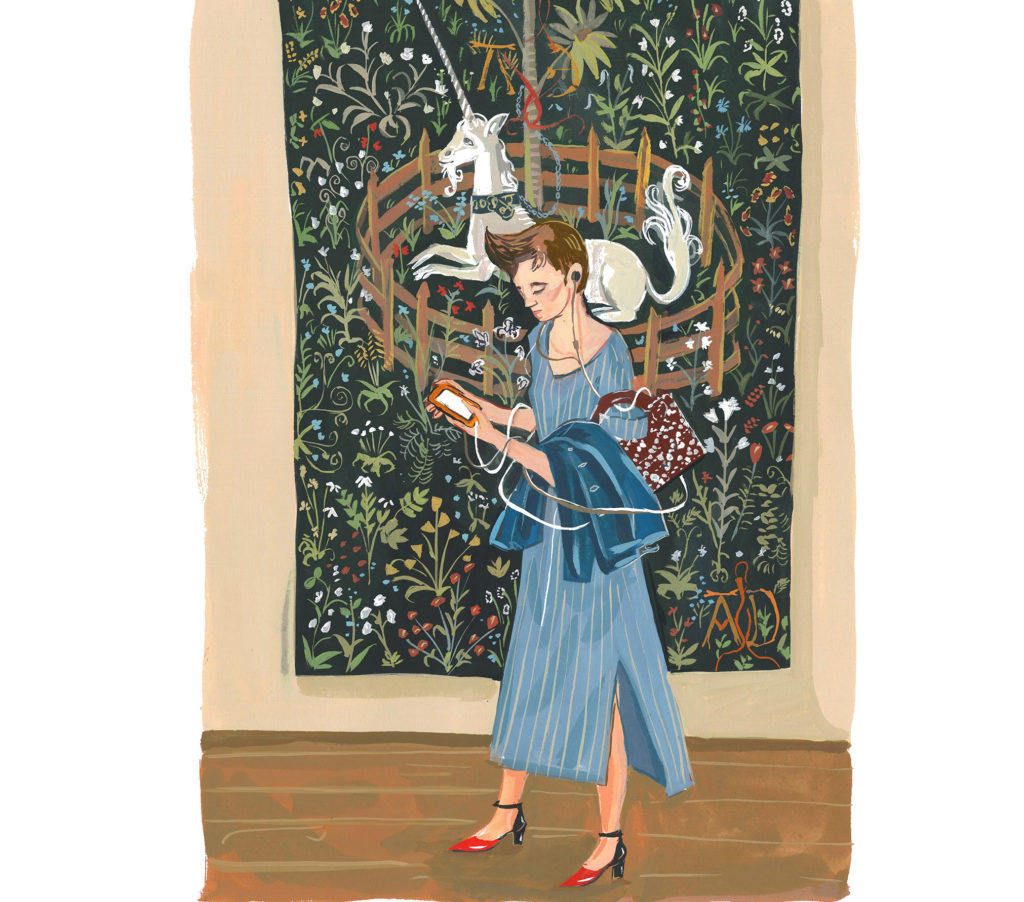We’re away until January 4, but we’re reposting some of our favorite pieces from 2020. Enjoy your holiday!
This puzzling quest is almost at its end. —James Rorimer, 1942
Nobody knows who made the Unicorn Tapestries, a set of seven weavings that depict a unicorn hunt that has been described as “the greatest inheritance of the Middle Ages.”
Without evidence, the La Rochefoucauld family in France asserted that the tapestries originate with the marriage of a family ancestor in the fifteenth century. The tapestries did belong to the La Rochefoucauld in 1793, before they were stolen by rioters who set fire to their château at Verteuil. The family regained possession sixty years later, when the tapestries were recovered in a barn. The precious weavings of wool, silk, gold, and silver were in tatters at their edges and punched full of holes. They had been used to wrap barren fruit trees during the winter.
In late 1922, the Unicorn Tapestries disappeared again. They were sent to New York for an exhibition, which never opened. A rich American had bought them and transferred them to his bank vault before anyone else could see them. In February 1923, John D. Rockefeller Jr. confirmed from his vacation home in Florida that he was the American who had acquired the tapestries for the price of $1.1 million. The tapestries were transferred to Rockefeller’s private residence in Midtown Manhattan.
Fourteen years later, Rockefeller donated the tapestries to the Cloisters, a new medieval art museum he had funded as a branch of the Metropolitan Museum of Art. The mysterious works were to be on regular public display for the first time in their five-hundred-year history. James Rorimer, the first curator of the Cloisters, had the intimidating task of interpreting them.
from The Paris Review https://ift.tt/3po0uAe

Comments
Post a Comment